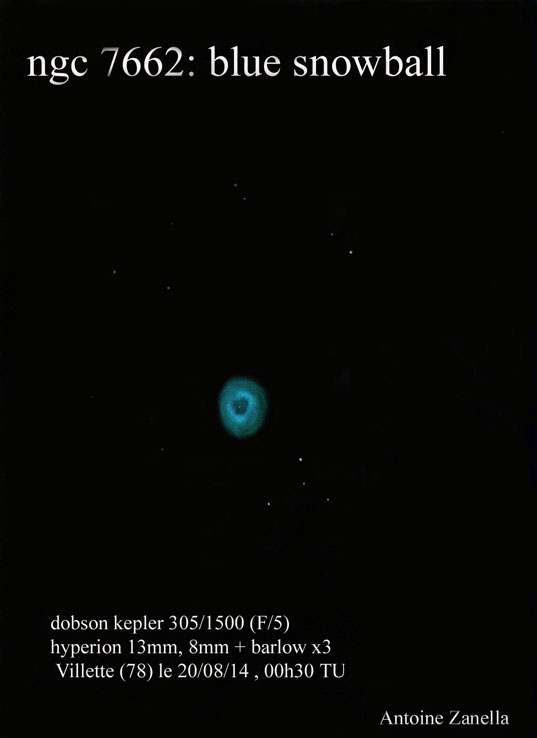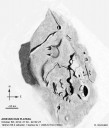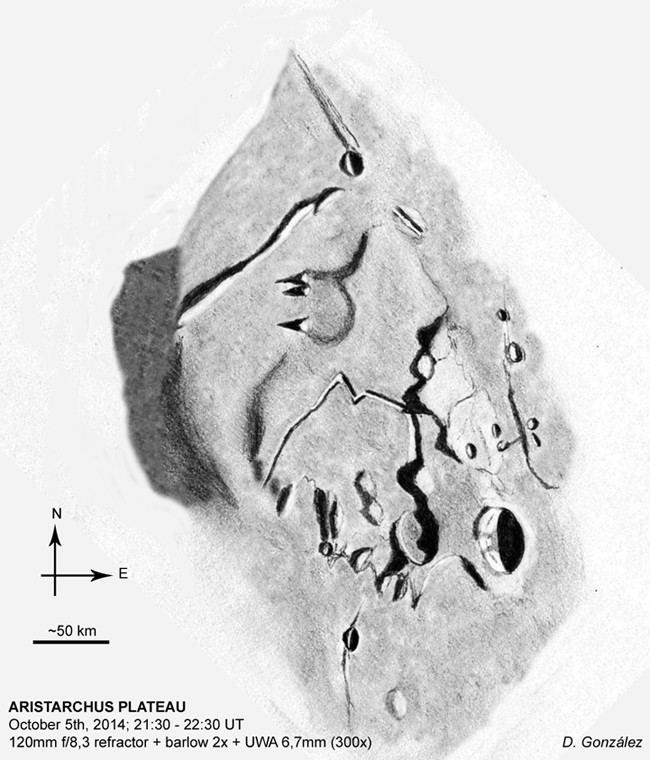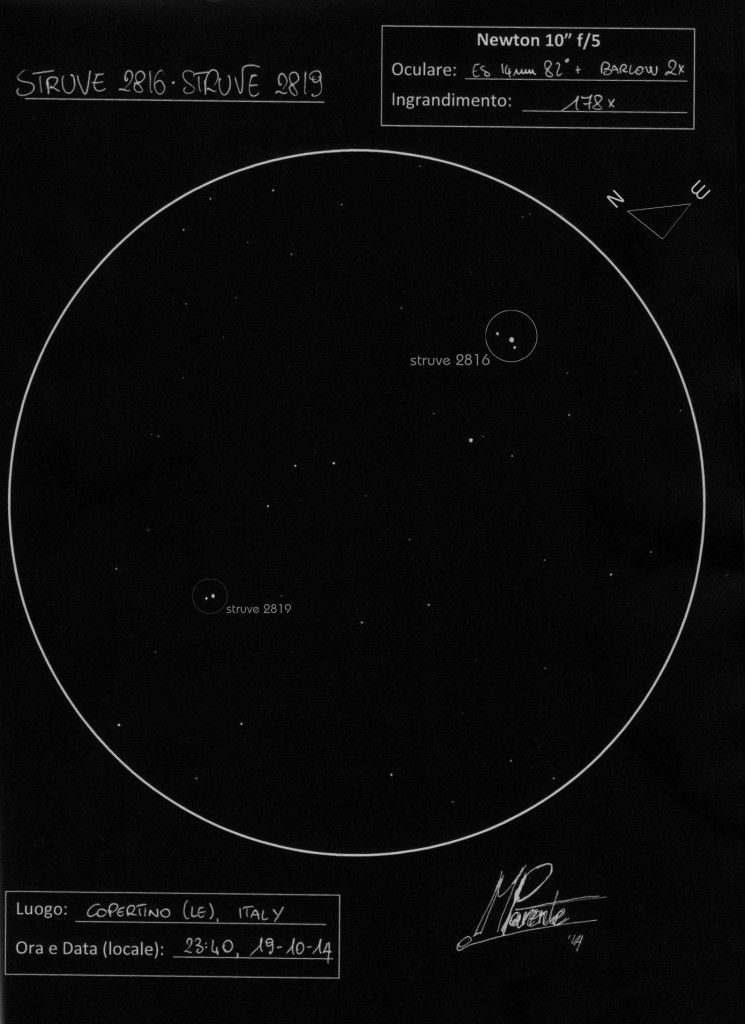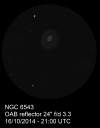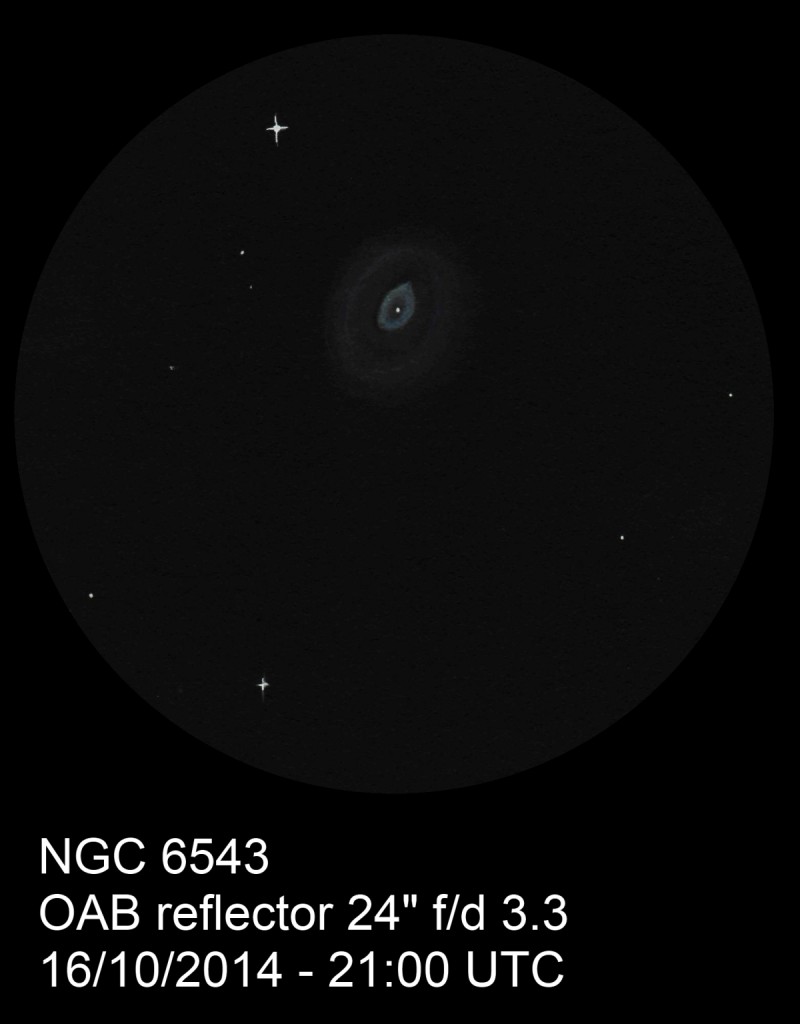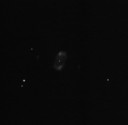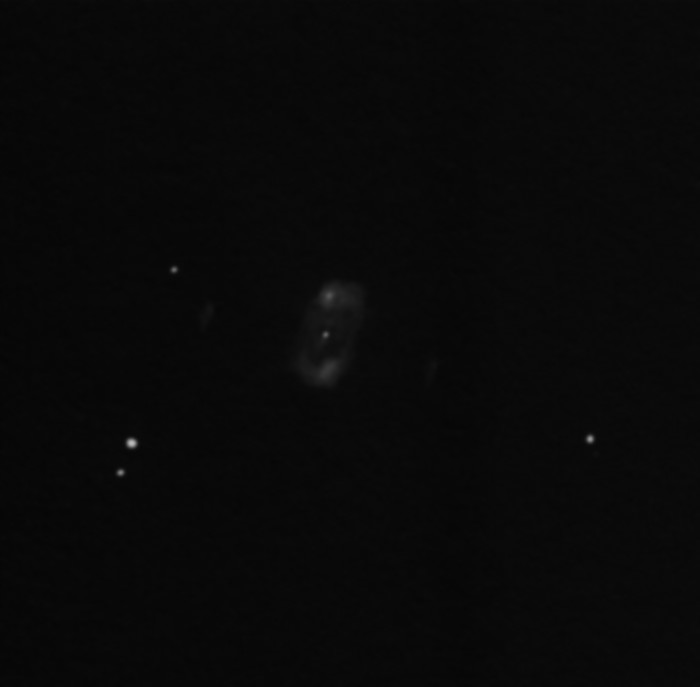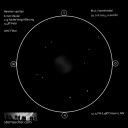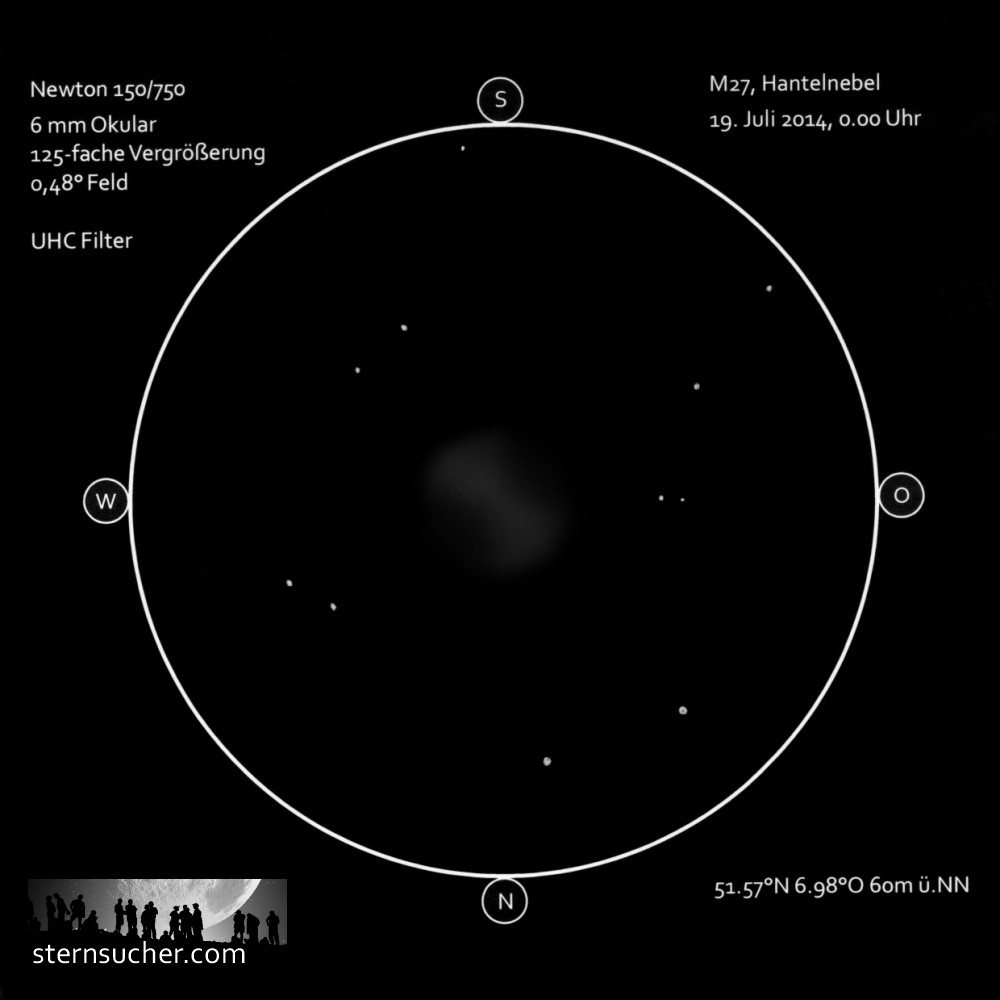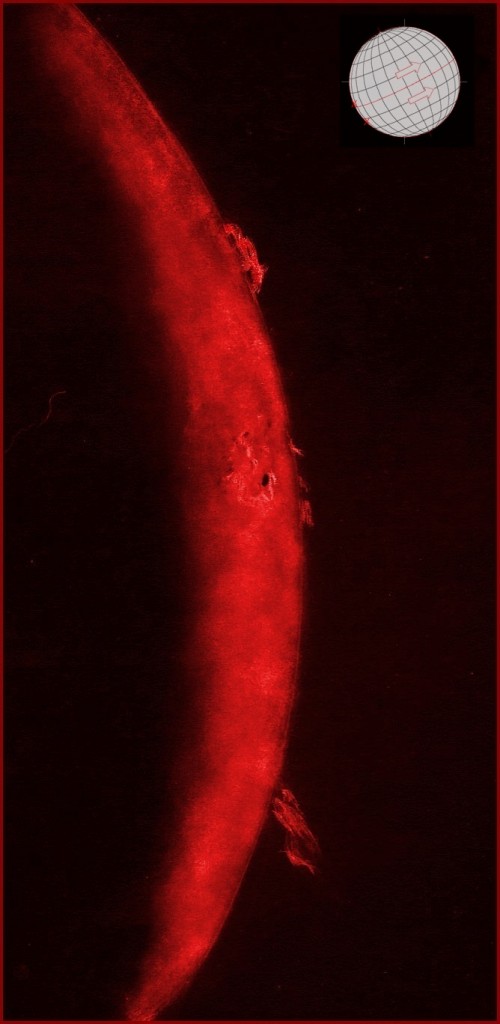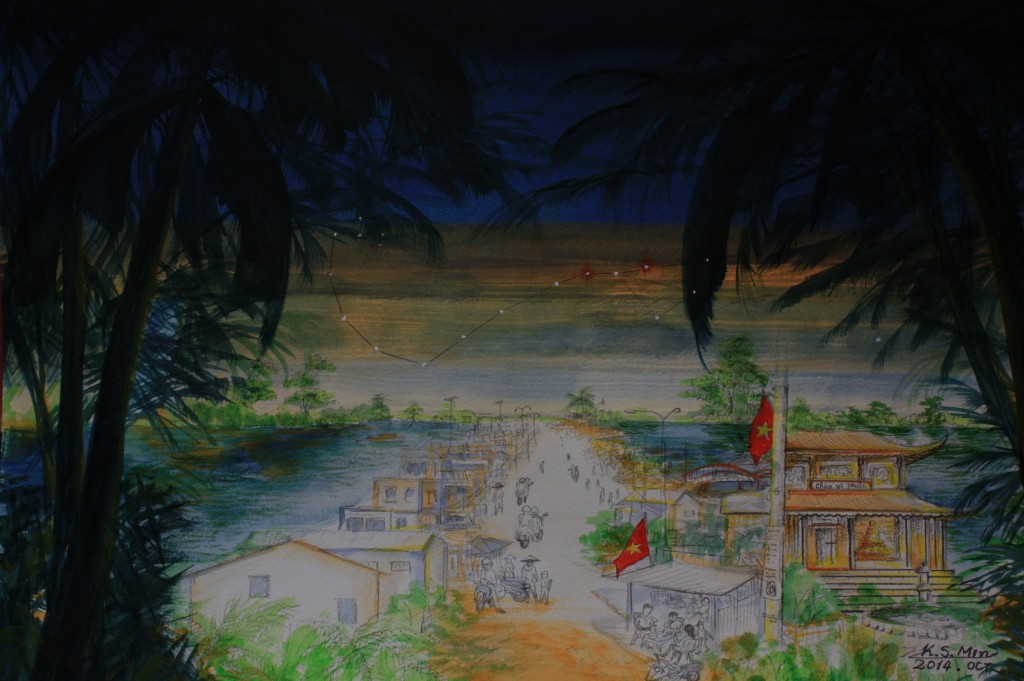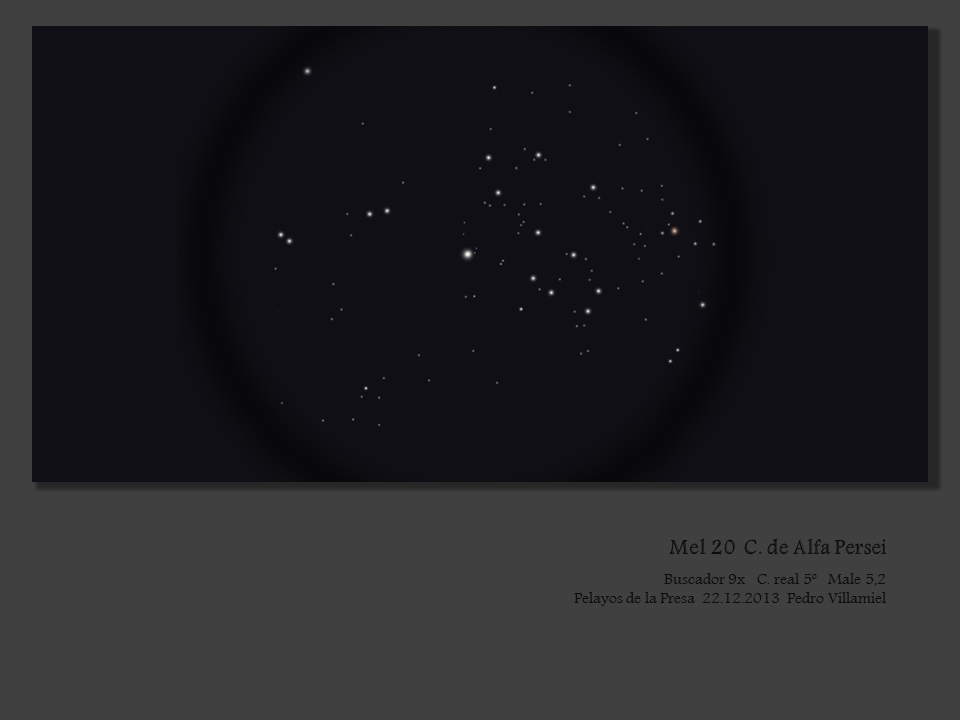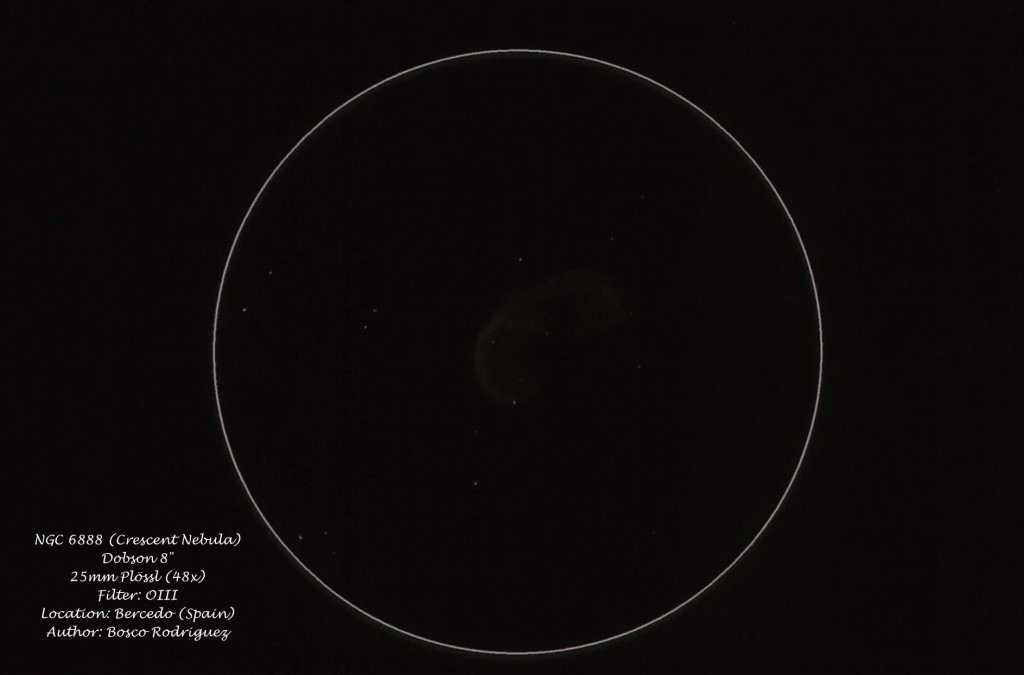
Object Name: NGC 6888(Crescent Nebula)
Object Type: Wolf-Rayet Nebula
Location: Bercedo, Burgos (Spain)
Date: 17/10/2014
Media: Graphite pencil, white paper, scanned and inverted with paint.
Equipment: Dobson 8″ + 25mm plössl (48x) + OIII Filter
Sky Conditions: windy, regular/bad seeing, no light pollution
Notes:While I manage to not fall over the telescope because of the gusty wind, I try to sketch that nebula. It shows really faint at the eyepiece field and without the OIII filter is barely visible. The nebula has an elliptical form (I would say it is like a potato) and I can discern the NW nebula’s elliptic edge (supposing that the North and East are 12 o’clock and 3 o’clock respectively at the eyepiece field’s edge) and the nebula’s interior is dark.
Best Regards


